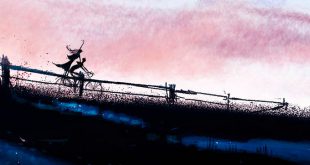 Sewellel — The Mountain Beaver (Aplodontia rufa) is a primitive rodent unrelated to beavers and not usually found in mountainous areas. It has several common names including Aplodontia, Boomer, Ground Bear, and Giant Mole. The name Sewellel Beaver comes from sewellel or suwellel, the Chinookan term for a cloak made from its pelts. This species is the only living member of its genus, Aplodontia, and family, Aplodontiidae.Mountain Beavers are brown in color, but fur can range from slightly more reddish or blackish depending on subspecies. There is a light patch under each ear. The animals have distinctively short tails. Adults weigh between about 500-900 g with a few specimens topping 1,000 g. Total length is about 30-50 cm with a tail length equal to 1-4 cm.
Sewellel — The Mountain Beaver (Aplodontia rufa) is a primitive rodent unrelated to beavers and not usually found in mountainous areas. It has several common names including Aplodontia, Boomer, Ground Bear, and Giant Mole. The name Sewellel Beaver comes from sewellel or suwellel, the Chinookan term for a cloak made from its pelts. This species is the only living member of its genus, Aplodontia, and family, Aplodontiidae.Mountain Beavers are brown in color, but fur can range from slightly more reddish or blackish depending on subspecies. There is a light patch under each ear. The animals have distinctively short tails. Adults weigh between about 500-900 g with a few specimens topping 1,000 g. Total length is about 30-50 cm with a tail length equal to 1-4 cm.
The skull is protrogomorphous. This means that it has no specialized attachments for the masseter muscles as seen in other rodents. It is flattened and lacks a postorbital process. The baculum is thin and distinctly forked. The penis is about 4.5 cm in length. They do not have a true scrotum, but testes move into a position called semiscrotal during the breeding season.
Mountain Beavers are found in coastal areas of the Pacific Northwest of North America. These are usually low elevation regions, but they can occasionally be seen as high as tree line. They can be found in both deciduous and coniferous forests, but appear to prefer the former. These animals appear to be physiologically limited to moist regions with minimal snowfall and cool winters. They do not appear to be able to conserve body heat or warmth as efficiently as other rodents. They do not hibernate.
Mountain Beavers build elaborate burrow systems with chambers devoted to fecal and food caches. They exhibit coprophagy and eat soft fecal pellets to obtain maximum nutrients. Hard fecal pellets are transferred to fecal chambers using their incisors. Food includes fleshy herbs and young shoots of more woody plants. Ferns probably make up the bulk of the diet. They appear to be strictly vegetarian. Their consumption of seedling trees has led some to consider them a pest. They appear to build hay mounds at some burrow entrances, but whether this behavior is related to water regulation, curing food, or gathering nest materials is debated.
 Kids Portal For Parents India Kids Network
Kids Portal For Parents India Kids Network






